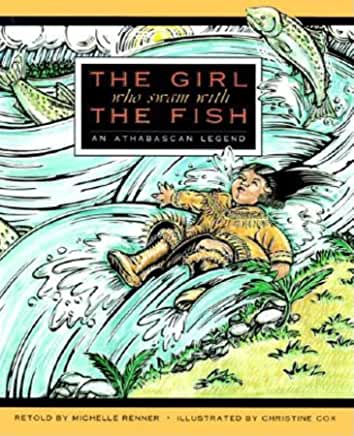Engage
“Raise your hand if you know what a salmon is.” Show picture of salmon. “Salmon are a very important part of how we live. Every year we wait for salmon to come back so we can catch them. Salmon are born in nests in streams and rivers. As they grow, they travel into the sea. When they are all grown up, they come back to lay more eggs. This is when we fish for them. Have you ever wondered what it is like being a salmon on this big journey? Let’s read an Athabascan story called “The Girl who Swam with the Fish” to find out”
Explore
Activity: 15 – 20 minutes
Have students sit while you read them “The Girl that Swam with the Fish.” Feel free to read the book in more than one sitting. When you are finished, hand out paper and art supplies. Have students draw themselves swimming with the salmon just like the girl in the story. When finished, have each student explain their drawing to the class.
Explain
“In this story, the girl wanted to know what it was like to be a salmon. What was your favorite part of the story? Why did that stand out to you? Did you learn anything about salmon? To really find out what it’s like to be a salmon, we have to learn about the life of a salmon. They start out as small eggs.” Show picture of eggs. “When they hatch, they are called alevins.” Show picture of alevins. “Alevins turn into fry. Have any of you seen fry before?” Show a picture of fry. “These fry then turn into smolt. Smolt look silvery, and are starting to look like a salmon. “Smolt head out to the ocean to grow into adult salmon.“ Show picture of adult salmon. “Here is an adult salmon. Who has seen these before? Have you fished for salmon with your family?” “When salmon come back to their nesting ground, they change a bright red. They do this right before they lay eggs and die. Have any of you harvested red fish before?” “Salmon are such a big part of our lives. In this story, the salmon teach the girl how to treat them when fishing for them. Always respect salmon when you are fishing for them. What were some things in the story the salmon asked the girl to do?” “It is important that we take care of our salmon and respect the ones we catch since they are so important to our lives. Do any of you have any salmon stories you would like to share?”
Extension: The salmon lifecycle cutouts can be used as a fun sequencing activity. Give each student a partner and have them work together to put them in order in a line.


